Sunday 8 February 1942
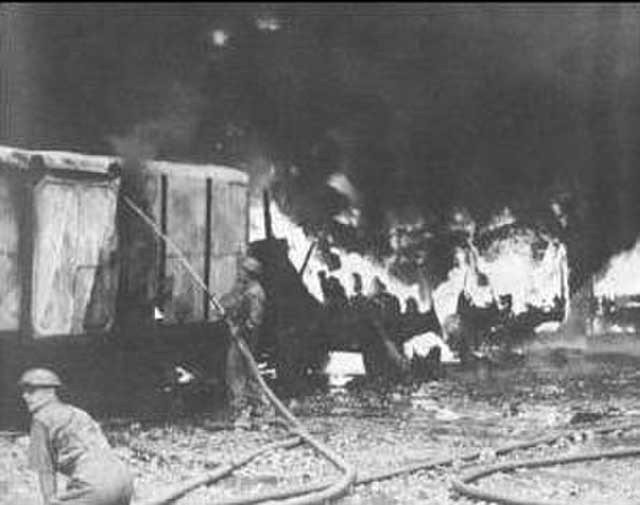 |
| Firefighters in Singapore battle a fire set by Japanese bombs on 8 February 1942. |
Battle of the Pacific: After hours of preliminary bombardment by Japanese artillery, on 8 February 1942 the invasion of Singapore Island at Lim Chu Kang begins at 20:30 when Japanese boats carrying troops approach northwest Singapore. The Japanese troops of the 5th and 18th Divisions land at Sarimbun Beach, which is defended by just three battalions Australian 22nd Brigade. The Japanese gradually expand their foothold throughout the night, eventually landing 4000 troops. By midnight, the Japanese invaders have local ascendancy and the overwhelmed Australian troops have lost communication with each other and are in full retreat.
The Japanese continue their gradual occupation of Borneo today when they land at Bandjermasin in southeast Borneo. US Army Force Fifth Air Force bombers based at Singosari Aerodrome, Java, mounts a raid on Kendari II Airdrome on Celebes. The defending dozen Japanese fighters spot the force early and shoot down two of nine B-17 bombers and damage a third. The surviving bombers abort the mission and return to base.
Continuing a rather trendless pointless trend of the first few months after the Pearl Harbor attack, a Japanese submarine surfaces. It shells Allied installations. HIJMS I-69, which has been in the vicinity of Midway since 21 January 1942 and whose crew may simply be bored, shells Midway atoll to little purpose.
Eastern Front: While the German troops in Demyansk have been isolated for some time, 8 February 1942 is regarded as the date on which the pocket there forms. The Soviets are under the command of General Kurochkin. Encircled are about 90,000 Wehrmacht troops and around 10,000 auxiliaries under the command of II Corps (General Walter von Brockdorff-Ahlefeldt). These men are members of the 12th, 30th, 32nd, 123rd and 290th infantry divisions, and the SS Division Totenkopf, as well as the Reich Labour Service, Ordnungspolizei (uniformed police), Organisation Todt, and other auxiliary units. Many have been swept into the pocket by the advance of the Soviet Northwest Front under the command of General Lieutenant Pavel Kurochkin. The Red Army successfully has severed the Demyansk position, which has been forbidden to withdraw due to Hitler's "stand fast" orders, from its railhead at Staraya Russa south of Lake Ilmen. While the Soviet advance has severed the German lines of communication, it has not captured any major German fortified positions, and eliminating the Demyansk pocket turns into their best chance to do that. The Luftwaffe already has an air supply to Demyansk in progress under the command of Luftflotte 1. Unlike some later and notorious airlifts, the Demyansk airlift (and the contemporaneous one to the smaller trapped garrison about 62 miles (100 km) to the south at Kholm) is successful. This is because it benefits from relatively short flights and a lack of concentrated Red Army anti-aircraft fire in the forested areas surrounding the pocket.
European Air Operations: Weather conditions are poor, so an RAF mission by four Blenheim Intruders to the Netherlands is recalled while still over the English Channel.
Battle of the Atlantic: U-108 (KrvKpt. Klaus Scholtz), on its sixth patrol out of Lorient, torpedoes and sinks 7174-ton British freighter Ocean Venture about 100 miles northeast of Norfolk, Virginia (near Cape Hatteras). There are a dozen survivors and 31 deaths.
The ships which are slated to be involved in German Operation Cerberus, the Channel Dash, continue working up their seaworthiness after a year of inactivity at Brest, France. Adolf Galland, Luftwaffe Inspector of Fighters, prepares air cover for the mission. Operation Cerberus is scheduled for the night of 11 February due to lunar conditions.
Battle of the Mediterranean: Royal Navy submarine HMS Proteus collides with Italian torpedo boat Sagittario off the North African coast. Both ships make it back to port, the Proteus with bent hydroplanes.
1334-ton Italian freighter SS Duino hits a mine and sinks off Cape San Vito, near Bari, Italy. This sinking is sometimes credited to HMS Upholder, but it is usually attributed to a mine. Italian 2710-ton freighter Salpi is also damaged and perhaps sunk in this incident.
US/Philippine Relations: Philippine President Manuel Quezon asks President Franklin Roosevelt to grant his country independence and declare it a neutral area. Roosevelt ignores the request but gives the US area commander, General Douglas MacArthur, permission to surrender Filipino troops if he sees fit. This, of course, is not something the Filipino troops or MacArthur have any desire to do, as rumors of Japanese atrocities are floating throughout the theater.
US Military: A fire at Camp Edwards, Cape Cod, destroys 125 vehicles and causes an estimated $250,000 in damage. There are no injuries or deaths.
Canadian Military: The third contingent of Canadian troops lands in Great Britain.
German Government: Having spent an extended period at the Wolfsschanze ("Wolf's Lair") near Rastenburg in East Prussia, Dr. Fritz Todt perishes in an aircraft accident shortly after takeoff on 8 February 1942. Reich Minister for Armaments and Ammunition Todt recently had acquired new powers over the economy to improve war production. These powers would have impinged upon the fiefdoms of other top German officials, most significantly those of Reichsmarschall Hermann Goering, whose Reich Air Ministry investigates the crash and flatly denied "the possibility of sabotage." Regardless, there are suspicions of assassination. Todt's is one in a series of mysterious transport plane crashes, including those of General der Jagdflieger Werner Mölders and General Hans-Valentin Hube, which remove promising leaders of the Third Reich. Todt's name remains on structures throughout Europe by virtue of inscriptions commemorating their erection by military engineering company Organisation Todt.
Albert Speer, Adolf Hitler's favorite architect who has been working on civic improvements in Berlin, just happens to be at the Wolfsschanze. He arrived there the previous evening in order to accompany Todt back to Berlin. However, Speer canceled this trip with Todt a few hours before takeoff, claiming fatigue from a late-night discussion with Hitler. Upon learning of the crash, Hitler instantly offers the position to Speer., who accepts. There is speculation that Hitler made this uncharacteristically quick decision in order to forestall a major battle within his inner circle over the Ministry and its immense power over the Reich economy. In particular, Goering was known to covet the Ministry, which would solidify his growing empire of factories throughout Austra and the Balkans (the "Hermann Goering Works"). Hitler also appoints Speer to replace Todt as head of the Organisation Todt, which is tasked with building fortifications throughout Europe.
Everyone, on both sides of the conflict, ultimately agrees that this choice of Speer to replace Todt is among Hitler's most inspired appointments. An architect by training, Alber Speer has virtually no experience in the management of armaments. What he does have in abundance, though, is common sense and few scruples about fulfilling Hitler's wishes. Speer certainly has his detractors within the Reich leadership, where he is disparaged and lazy and not fully committed to ultimate victory. However, Albert Speer is ambitious and savvy enough to use his close relationship with Hitler (whom he has known since before Hitler became Chancellor when he was hired to renovate the Berlin NSDAP headquarters) to defend and even expand his powers. Speer ultimately may have cause to regret his appointment, as he is found guilty after the war of using slave labor and spends 20 years in prison. However, on 8 February 1942, Speer is merely one of Hitler's old cronies who finds himself with vast new powers through a stroke of fortune.
New Zealand: The government of New Zealand announces a potato shortage.
Holocaust: Dawid Rubinowicz, a 12-year-old Jewish boy in Occupied Poland, records in his diary an incident that he is told by another boy. He writes that a German soldier had entered a Jewish family's house and:
Separately, a transport train of 96 Soviet POWs arrives today at Auschwitz. Ultimately, about 15,000 Red Army POWs are sent there, and most perish.
American Homefront: Japanese nationals already are heading toward inland internment camps. As recalled by Toyojiro Suzuki, a member of the Japanese fishing settlement on Terminal Island in Los Angeles Harbor, he was imprisoned on 2 February by members of the Immigration and Naturalization Service and the Federal Bureau of Investigation before being embarked on a train east on 6 February. His train arrives today, 8 February 1942, in Missoula, Montana en route to a destination unknown. With him are approximately 150 other future internees. They are being taken to a camp outside Bismarck, North Dakota, where they arrive on 9 February.
February 1942
February 1, 1942: The US Navy Strikes Back
February 2, 1942: Germans Recovering in Russia
February 3, 1942: Japanese Shell and Bomb Singapore
February 4, 1942: Battle of Makassar Strait
February 5, 1942: Empress of Asia Sunk
February 6, 1942: The Christmas Island Body
February 7, 1942: The Double-V Campaign
February 8, 1942: Japan Invades Singapore
February 9, 1942: French Liner Normandie Capsizes
February 10, 1942: US Car Production Ends
February 11, 1942: Tomforce Fails on Singapore
February 12, 1942: The Channel Dash
February 13, 1942: Japanese Paratroopers In Action
February 14, 1942: RAF Orders Terror Raids
February 15, 1942: Japan Takes Singapore
February 17, 1942: Indian Troops Defect to Japanese
February 18, 1942: Battle of Badung Strait
February 19, 1942: FDR Authorizes Internment Camps
February 20, 1942: O'Hare the Hero
February 21, 1942: Crisis in Burma
February 22, 1942: Bomber Harris Takes Over
February 23, 1942: Bombardment of Ellwood, California
February 24, 1942: US Raid on Wake Island
February 25, 1942: Battle of Los Angeles
February 26, 1942: Gneisenau Eliminated
February 27, 1942: Battle of Java Sea
February 28, 1942: Battle of Sunda Strait
2020
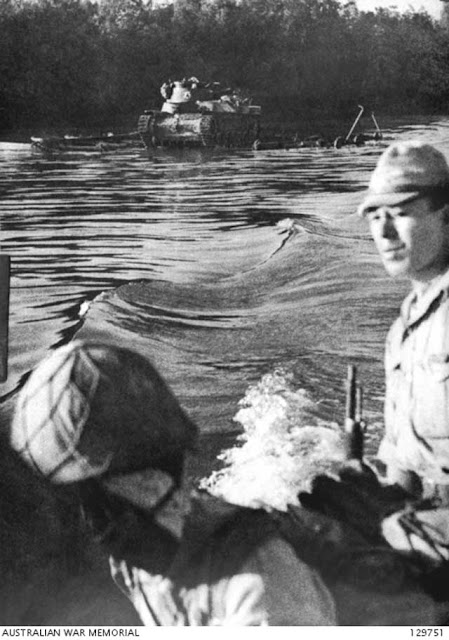 |
| Japanese troops crossing the Singapore Strait to invade Singapore ca. 8 February 1942 (Australian War Memorial 129751). |
Continuing a rather trendless pointless trend of the first few months after the Pearl Harbor attack, a Japanese submarine surfaces. It shells Allied installations. HIJMS I-69, which has been in the vicinity of Midway since 21 January 1942 and whose crew may simply be bored, shells Midway atoll to little purpose.
 |
| A Soviet Aerosan RF-8/GAZ-98 snowmobile in action, February 1942. They are powered by a propeller (not shown) in the rear, like an airboat in the Everglades. |
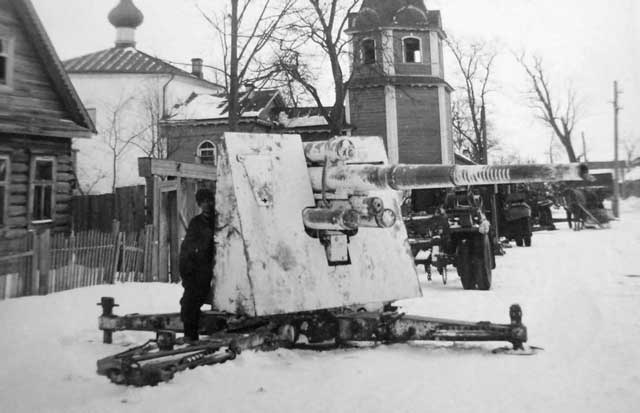 |
| A Flak 88 artillery piece in the Demyansk pocket, February 1942. |
Battle of the Atlantic: U-108 (KrvKpt. Klaus Scholtz), on its sixth patrol out of Lorient, torpedoes and sinks 7174-ton British freighter Ocean Venture about 100 miles northeast of Norfolk, Virginia (near Cape Hatteras). There are a dozen survivors and 31 deaths.
The ships which are slated to be involved in German Operation Cerberus, the Channel Dash, continue working up their seaworthiness after a year of inactivity at Brest, France. Adolf Galland, Luftwaffe Inspector of Fighters, prepares air cover for the mission. Operation Cerberus is scheduled for the night of 11 February due to lunar conditions.
 |
| SS Duino, sunk on 8 February 1942. |
1334-ton Italian freighter SS Duino hits a mine and sinks off Cape San Vito, near Bari, Italy. This sinking is sometimes credited to HMS Upholder, but it is usually attributed to a mine. Italian 2710-ton freighter Salpi is also damaged and perhaps sunk in this incident.
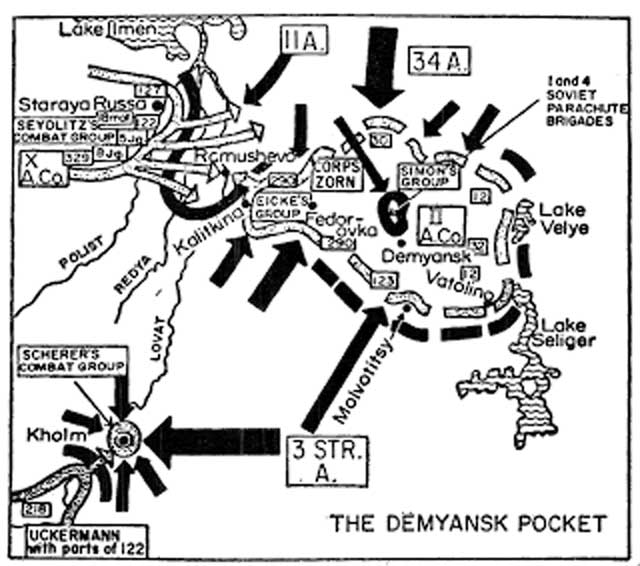 |
| The Demyansk and Kholm pockets. |
US Military: A fire at Camp Edwards, Cape Cod, destroys 125 vehicles and causes an estimated $250,000 in damage. There are no injuries or deaths.
Canadian Military: The third contingent of Canadian troops lands in Great Britain.
 |
| A Todt Organisation fortification at Cap Gris Nez, France, in 1942/43 (Maier, Federal Archive Bild 146-1973-036-01). |
 |
| Albert Speer, right, with Adolf Hitler. |
 |
| Albert Speer, left, famously accompanied Adolf Hitler, center, on an early-morning visit to Paris in mid-1940. Speer was there as Hitler's friend and architect, not for any military reason. |
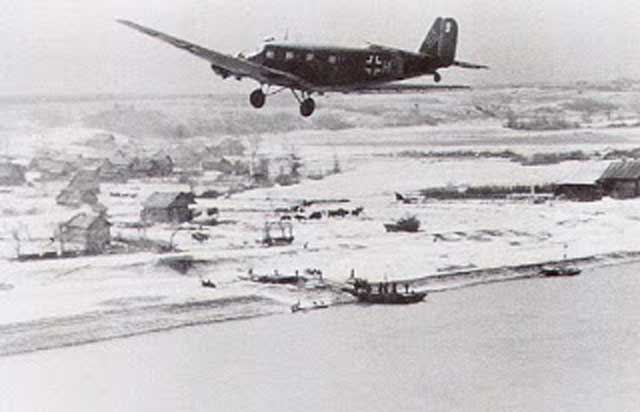 |
| A Luftwaffe Junkers Ju-52 flying in the Demyansk airbridge operation, 1942. |
Holocaust: Dawid Rubinowicz, a 12-year-old Jewish boy in Occupied Poland, records in his diary an incident that he is told by another boy. He writes that a German soldier had entered a Jewish family's house and:
turned everyone out of the place. He’d then ordered the snow to be shoveled into the house because it was so dirty inside. I didn’t believe it. In the evening, however, I went and saw with my own eyes that it was really true, what he’d told me in the morning. Everyone was terrified, as you can well imagine.While not as famous as Anne Frank's diary, the stories in the Rubinowicz diary are just as tragic.
Separately, a transport train of 96 Soviet POWs arrives today at Auschwitz. Ultimately, about 15,000 Red Army POWs are sent there, and most perish.
American Homefront: Japanese nationals already are heading toward inland internment camps. As recalled by Toyojiro Suzuki, a member of the Japanese fishing settlement on Terminal Island in Los Angeles Harbor, he was imprisoned on 2 February by members of the Immigration and Naturalization Service and the Federal Bureau of Investigation before being embarked on a train east on 6 February. His train arrives today, 8 February 1942, in Missoula, Montana en route to a destination unknown. With him are approximately 150 other future internees. They are being taken to a camp outside Bismarck, North Dakota, where they arrive on 9 February.
 |
| Times Square, New York City, February 1942 (John Vachon for Office of War Information). |
February 1942
February 1, 1942: The US Navy Strikes Back
February 2, 1942: Germans Recovering in Russia
February 3, 1942: Japanese Shell and Bomb Singapore
February 4, 1942: Battle of Makassar Strait
February 5, 1942: Empress of Asia Sunk
February 6, 1942: The Christmas Island Body
February 7, 1942: The Double-V Campaign
February 8, 1942: Japan Invades Singapore
February 9, 1942: French Liner Normandie Capsizes
February 10, 1942: US Car Production Ends
February 11, 1942: Tomforce Fails on Singapore
February 12, 1942: The Channel Dash
February 13, 1942: Japanese Paratroopers In Action
February 14, 1942: RAF Orders Terror Raids
February 15, 1942: Japan Takes Singapore
February 17, 1942: Indian Troops Defect to Japanese
February 18, 1942: Battle of Badung Strait
February 19, 1942: FDR Authorizes Internment Camps
February 20, 1942: O'Hare the Hero
February 21, 1942: Crisis in Burma
February 22, 1942: Bomber Harris Takes Over
February 23, 1942: Bombardment of Ellwood, California
February 24, 1942: US Raid on Wake Island
February 25, 1942: Battle of Los Angeles
February 26, 1942: Gneisenau Eliminated
February 27, 1942: Battle of Java Sea
February 28, 1942: Battle of Sunda Strait
2020
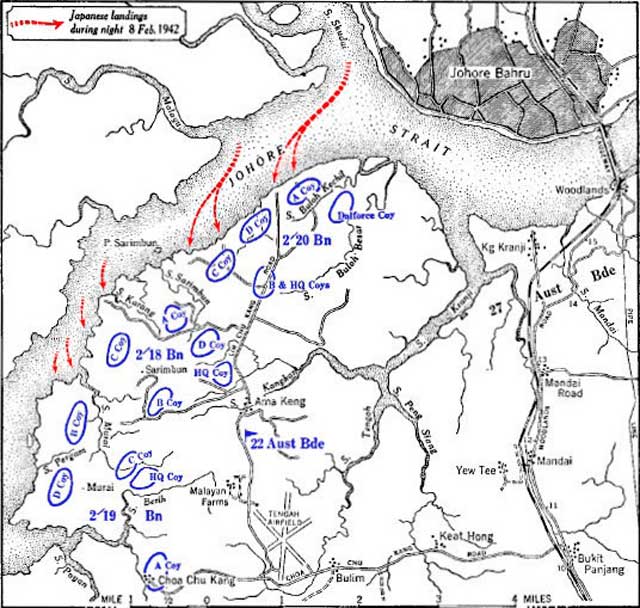
No comments:
Post a Comment